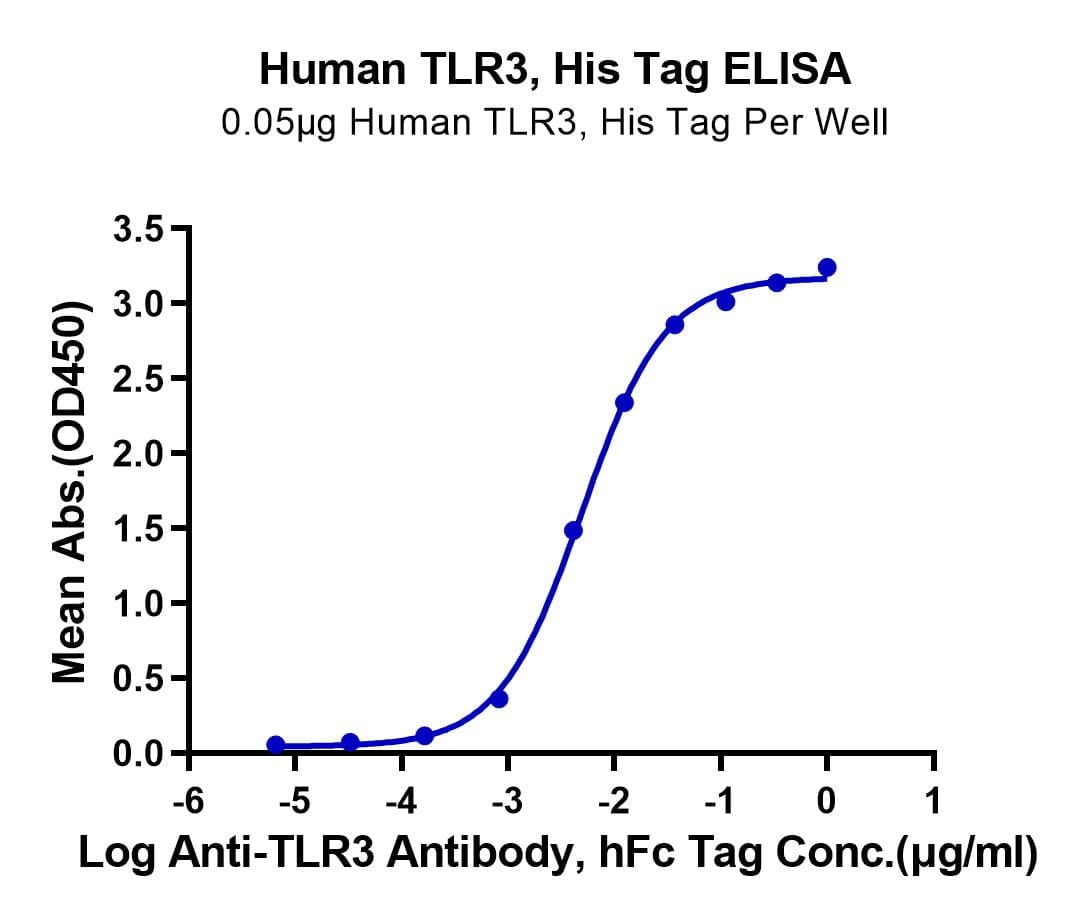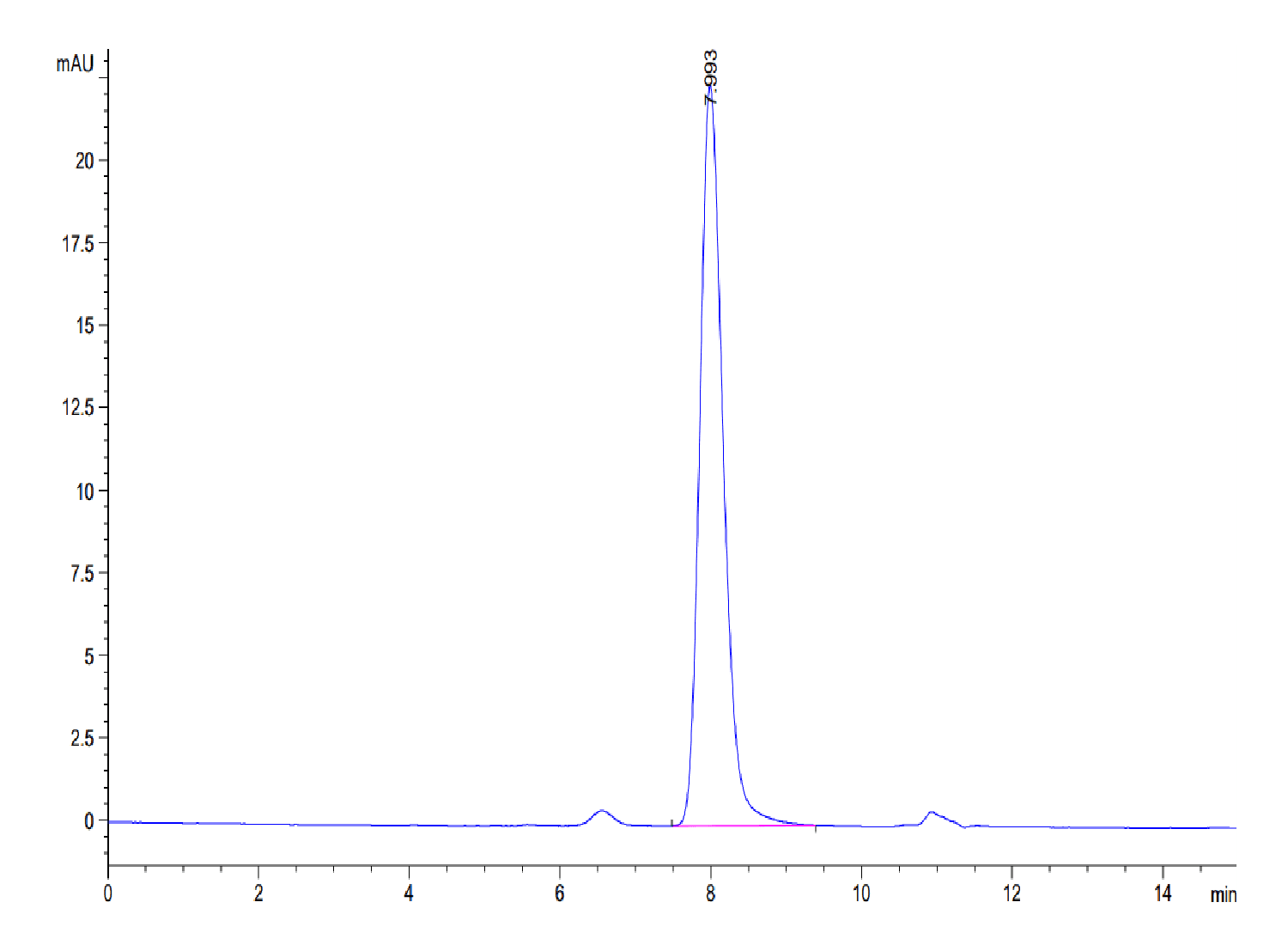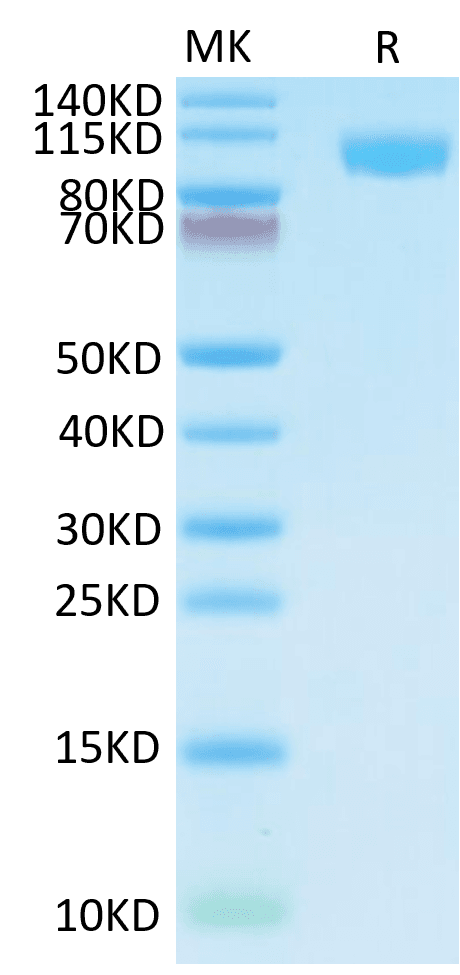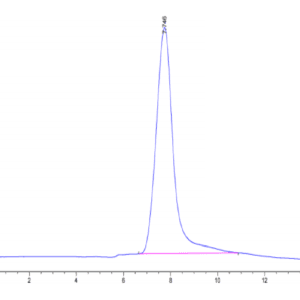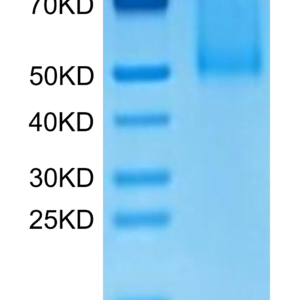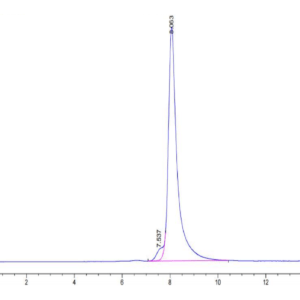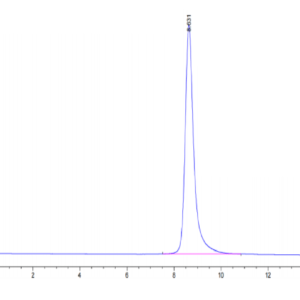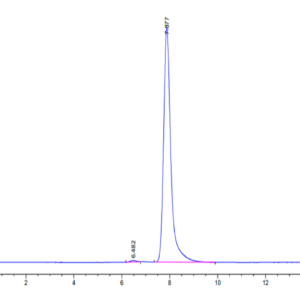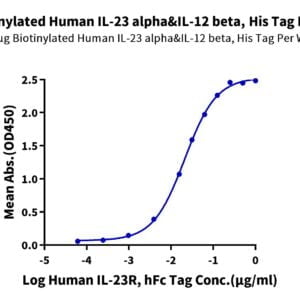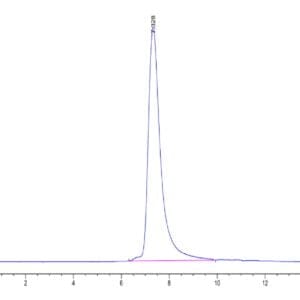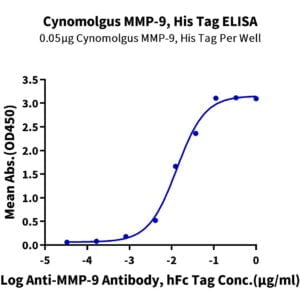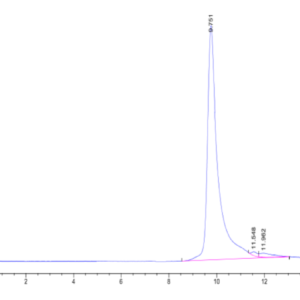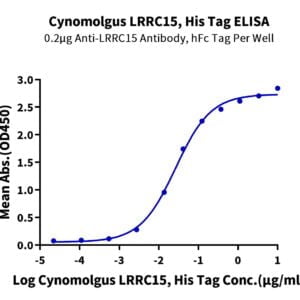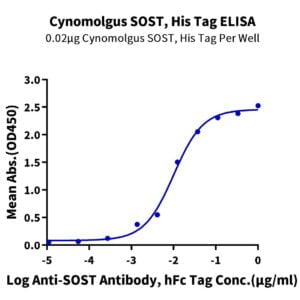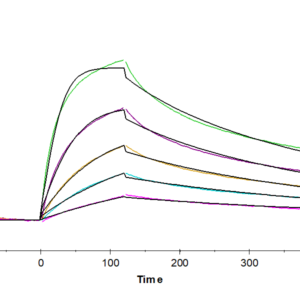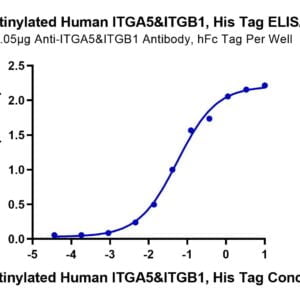| Weight | 1 lbs |
|---|---|
| Dimensions | 9 × 5 × 2 in |
| accession | Q6PCD4 |
| express system | HEK293 |
| product tag | C-His |
| purity | > 95% as determined by Tris-Bis PAGE;> 95% as determined by HPLC |
| background | TLR3 is expressed in the central nervous system (CNS), where it is required to control HSV-1, which spreads from the epithelium to the CNS via cranial nerves. TLR3 is also expressed in epithelial and dendritic cells, which apparently use TLR3-independent pathways to prevent further dissemination of HSV-1 and to provide resistance to other pathogens in TLR3-deficient patients. Human TLR3 appears to be redundant in host defense to most microbes but is vital for natural immunity to HSV-1 in the CNS, which suggests that neurotropic viruses have contributed to the evolutionary maintenance of TLR3. |
| molecular weight | The protein has a predicted MW of 78.7 kDa. Due to glycosylation, the protein migrates to 90-115 kDa based on Tris-Bis PAGE result. |
| available size | 100 µg, 500 µg |
| endotoxin | Less than 1EU per μg by the LAL method. |
Human TLR3 Protein 4264
$300.00 – $1,000.00
Summary
- Expression: HEK293
- Functional: Yes (ELISA)
- Amino Acid Range: Ser23-Glu703
Human TLR3 Protein 4264
| protein |
|---|
| Size and concentration 100, 500µg and lyophilized |
| Form Lyophilized |
| Storage Instructions Valid for 12 months from date of receipt when stored at -80°C. Recommend to aliquot the protein into smaller quantities for optimal storage. Please minimize freeze-thaw cycles. |
| Storage buffer Shipped at ambient temperature. |
| Purity > 95% as determined by Tris-Bis PAGE |
| target relevance |
|---|
| TLR3 is expressed in the central nervous system (CNS), where it is required to control HSV-1, which spreads from the epithelium to the CNS via cranial nerves. TLR3 is also expressed in epithelial and dendritic cells, which apparently use TLR3-independent pathways to prevent further dissemination of HSV-1 and to provide resistance to other pathogens in TLR3-deficient patients. Human TLR3 appears to be redundant in host defense to most microbes but is vital for natural immunity to HSV-1 in the CNS, which suggests that neurotropic viruses have contributed to the evolutionary maintenance of TLR3. |
| Protein names TLR3 protein |
| Gene names TLR3,TLR3 |
| Protein family Toll-like receptor family |
| Mass 9606Da |
| Subellular location Membrane ; Single-pass type I membrane protein . |
| Target Relevance information above includes information from UniProt accession: Q6PCD4 |
| The UniProt Consortium |
Data
Publications
Publications
| pmid | title | authors | citation |
|---|---|---|---|
| We haven't added any publications to our database yet. | |||
Protocols
| relevant to this product |
|---|
Documents
| # | ||
|---|---|---|
| Please enter your product and batch number here to retrieve product datasheet, SDS, and QC information. | ||
